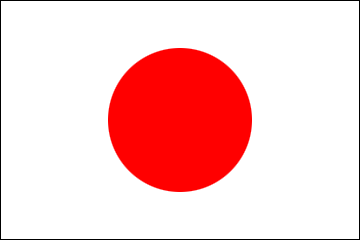Eating Seasonally with Chef Owada: Risshun "Beginning of Spring" (Feb. 4 to 18)
2024/2/9
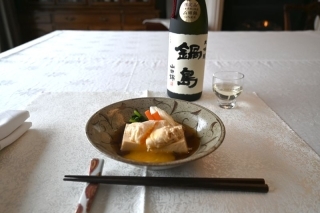 Sukiyaki-style Egg & Tofu
Sukiyaki-style Egg & Tofu
Ingredients & Method (serves 1)
| Amount | Ingredient | 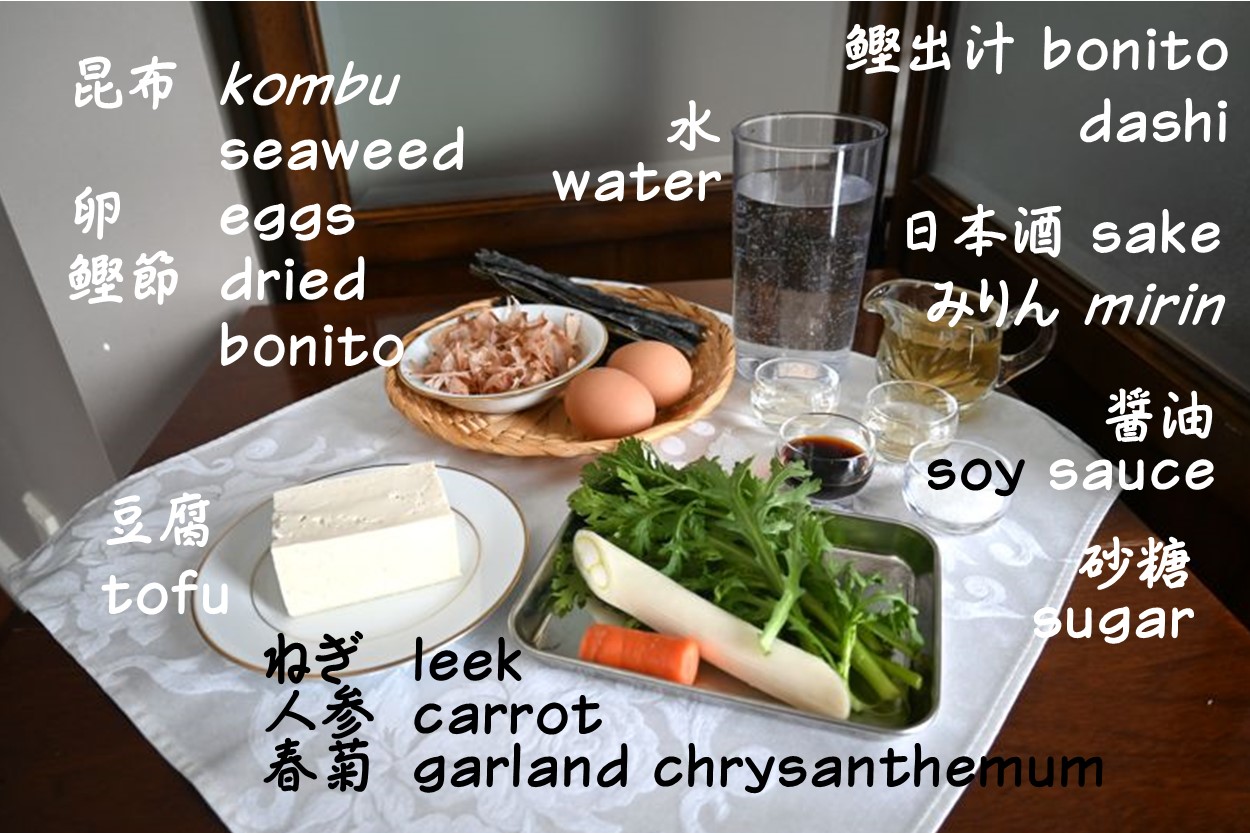 |
|---|---|---|
| ½ block | tofu | |
| ½ | leek | |
| about 2 sprigs (50g) | garland chrysanthemum | |
| ⅕ | carrot | |
| 2 | eggs | |
| (For the sukiyaki broth) | ||
| 1 cup | Bonito dashi | |
| (*measurements below) | ||
| 3 tbsp. plus 1 tsp. | cooking sake | |
| 3 tbsp. plus 1 tsp. | mirin | |
| 3 tbsp. plus 1 tsp. | soy sauce | |
| 1 tbsp. | sugar | |
| *Bonito dashi (makes extra) | ||
| 1L | water | |
| ⅓ cup (~10g) | kombu seaweed | |
| 2½ cups (25g) | bonito flakes | |
- Make the dashi broth. (Follow the instructions below, or substitue with dashi powder or granules if you prefer.)
- Combine all seasonings for sukiyaki broth in a pot.
- Cut the tofu, garland chrysanthemum, leek and carrot.
- Heat the sukiyaki broth, and when it comes to a boil, add tofu and vegetables. Finally, gently crack eggs into a bowl and transfer to the boiling broth.
- Once the egg whites have cooked, it's finished!
*To make dashi broth
- Heat water and kombu on medium until about 65°C (the surface of the water will undulate slightly.)
- Remove the kombu, bring fully to a boil and then remove from heat.
- Add the bonito flakes and steep until desired flavour. Then, strain into a bowl. (Remove any scum, if applicable.)
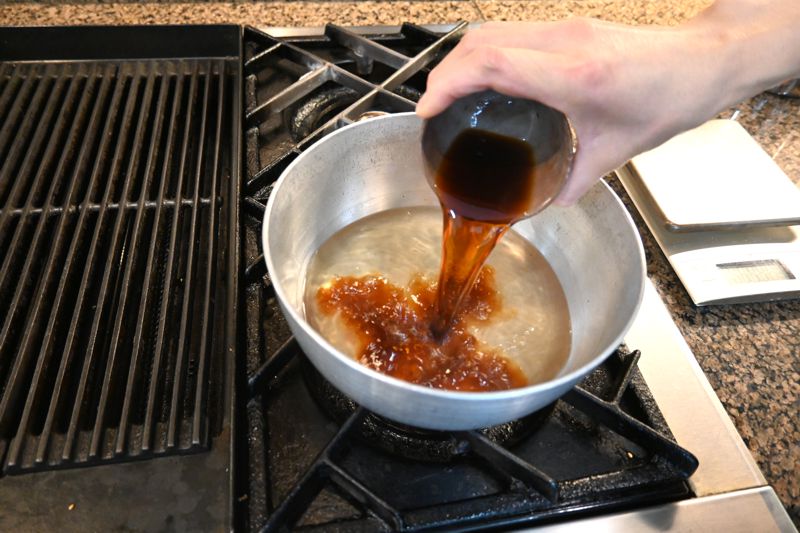 |
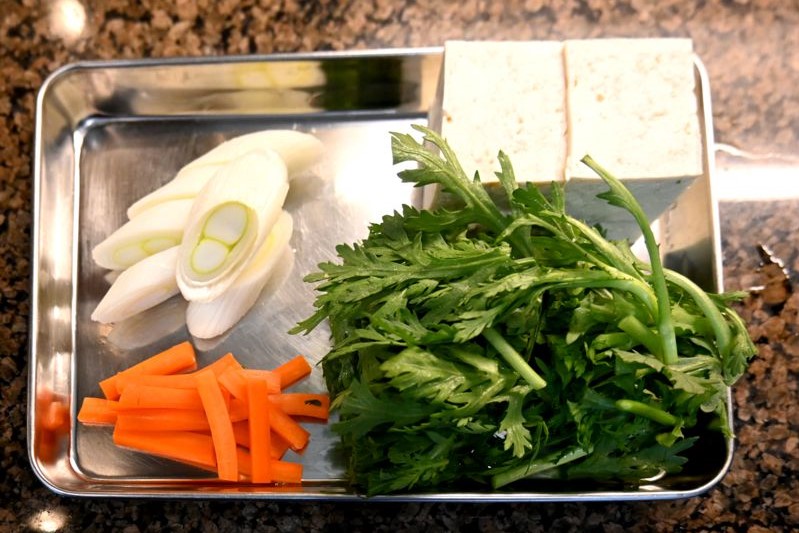 |
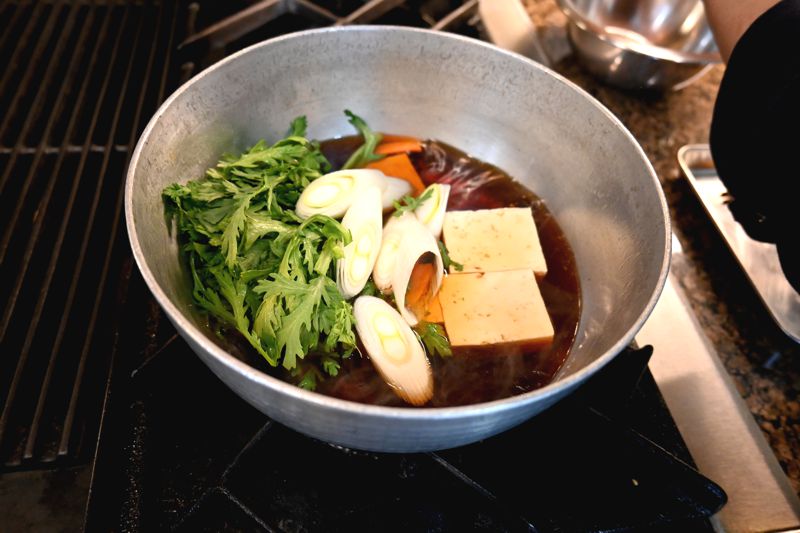 |
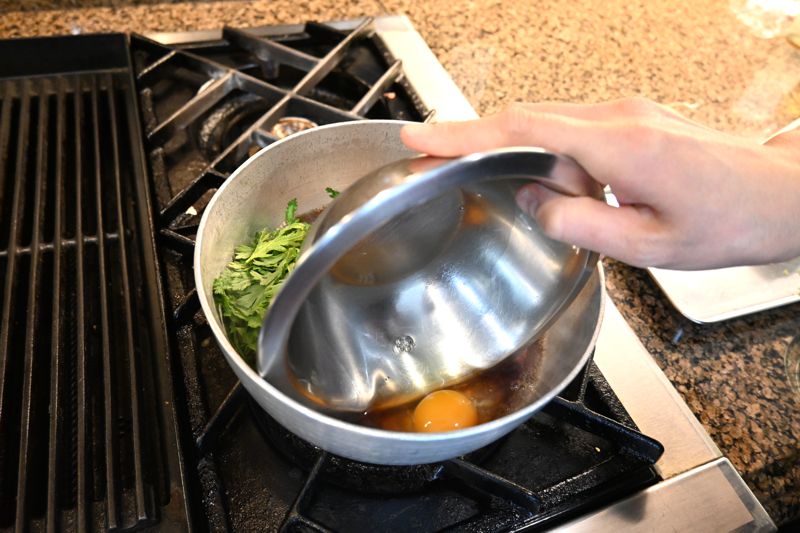 |
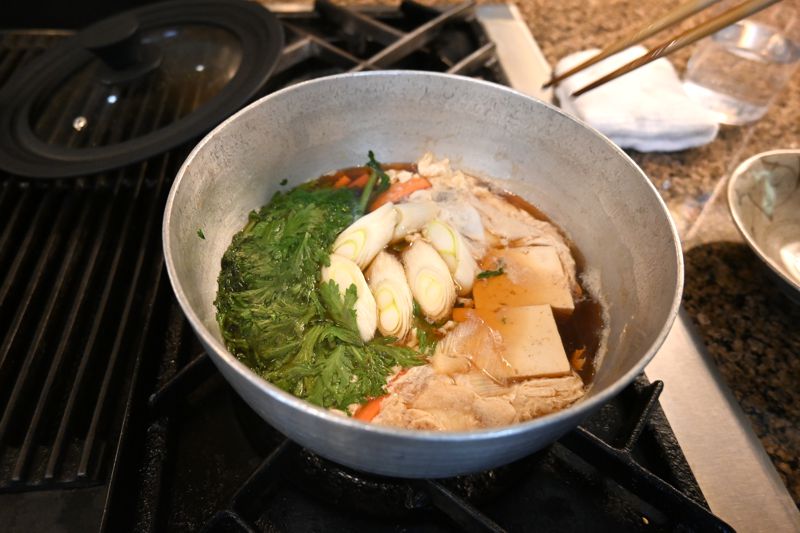 |
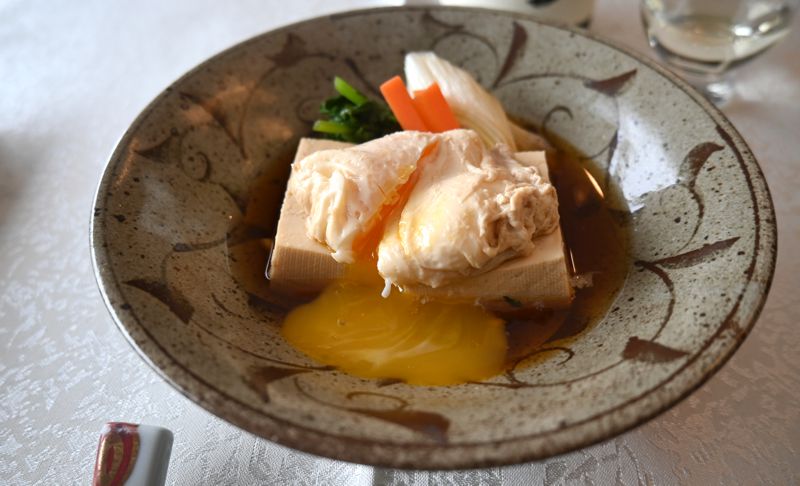
Complete!!
To make dashi
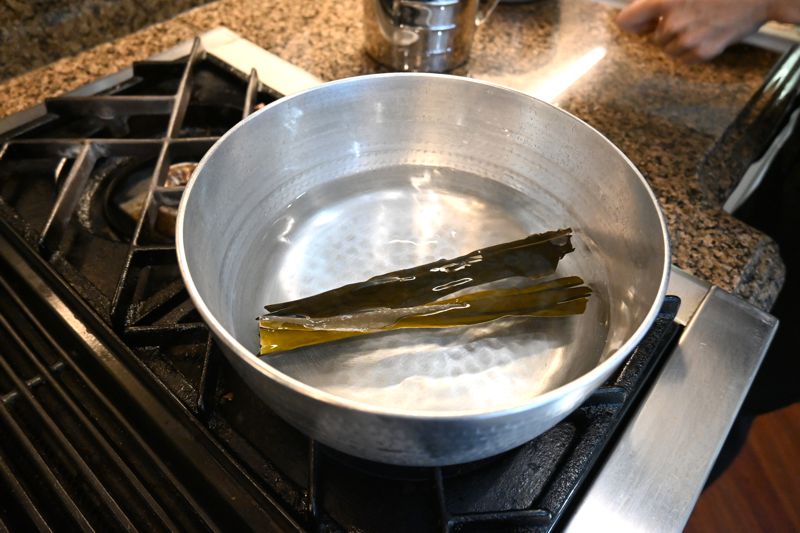 |
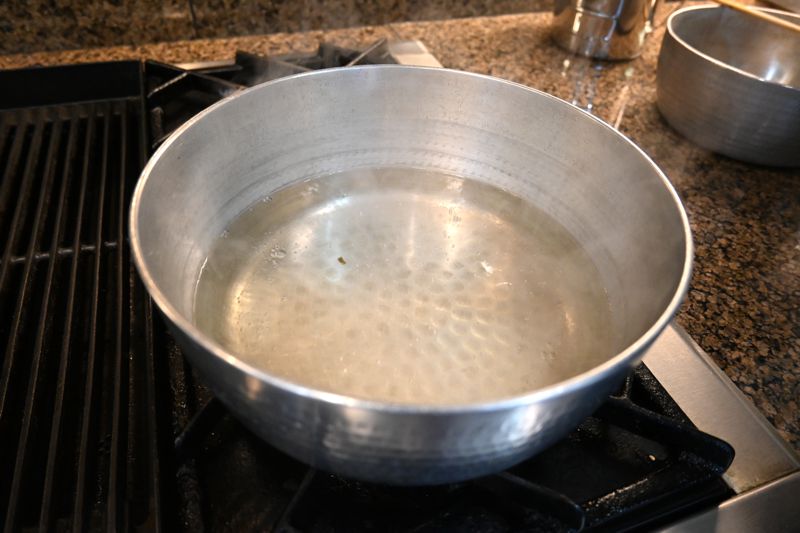 |
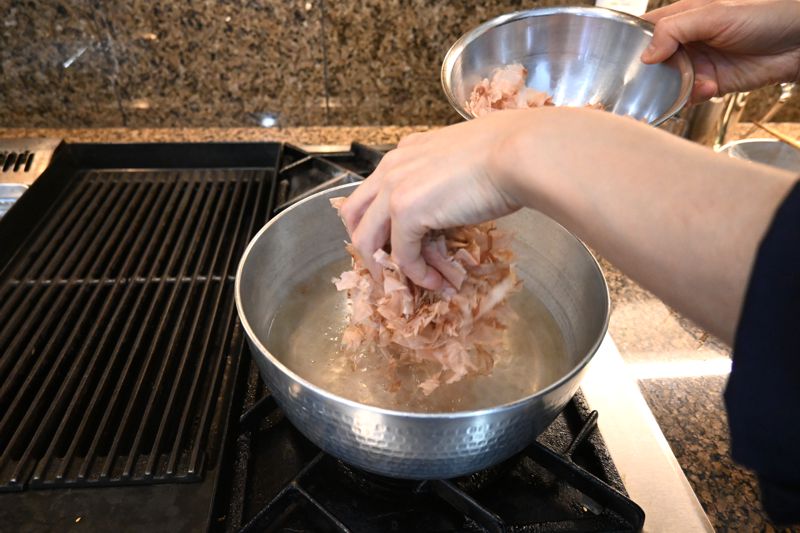 |
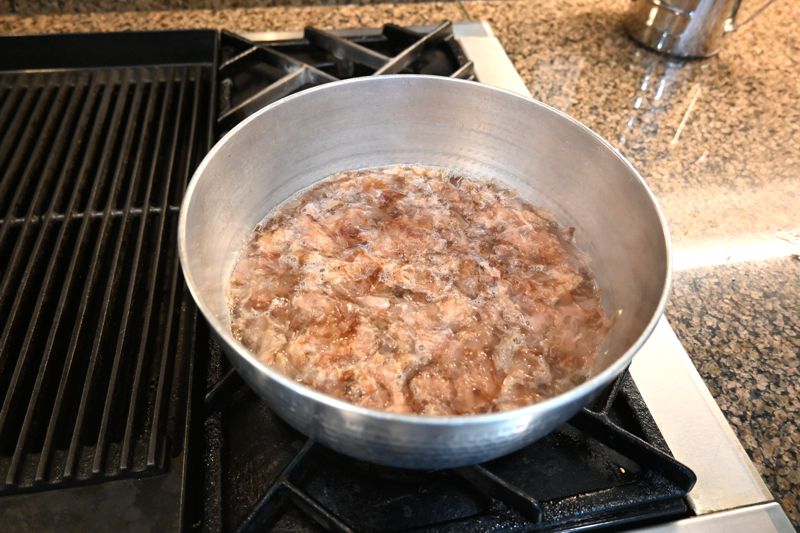 |
 |
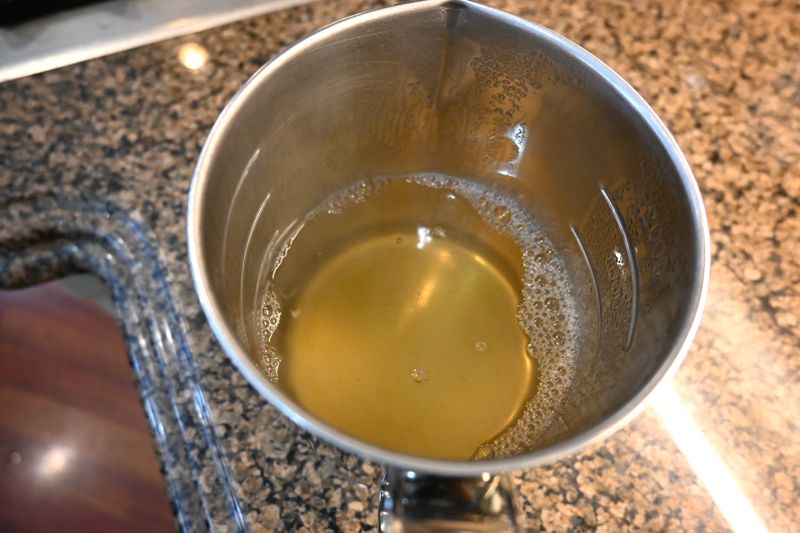 |
Tips from Chef Owada!
- The cold weather continues in both Japan and Canada. Historically, Risshun (Feb 4–18) is the time when the long winter comes to an end, and it will slowly become warmer. In the warmer areas of Japan, plum blossoms are beginning to unravel, and you can feel the arrival of spring little by little.
- Tofu is one of the foods considered lucky around the time of Risshun. From long ago, it is said that "white tofu wards off evil spirits." It's best to eat it while it is still as white as possible, so I prepared a dish with a very short cooking time that you can eat right away!
- The flavor of dashi broth can change greatly depending on the ingredients used and the temperature of the heat. It's important to check the flavor at each step: the flavor from the kombu, after adding the bonito flakes, and also checking the color. Try making it a few times and see what flavors you like best!
Sake Pairing: Nabeshima (Daiginjo) -- Saga Prefecture
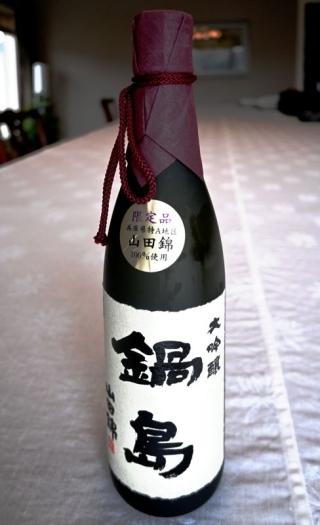 Nabeshima (Daiginjo) -- Saga Prefecture
Nabeshima (Daiginjo) -- Saga Prefecture
This is a sake where you can fully experience the rich and abundant ginjo aroma and flavor of rice.
It is quite amazing how the taste undergoes numerous changes from the first sip to the aftertaste.
Enjoy the harmony between the intense tofu and sukiyaki broth and the sake!
It is quite amazing how the taste undergoes numerous changes from the first sip to the aftertaste.
Enjoy the harmony between the intense tofu and sukiyaki broth and the sake!
